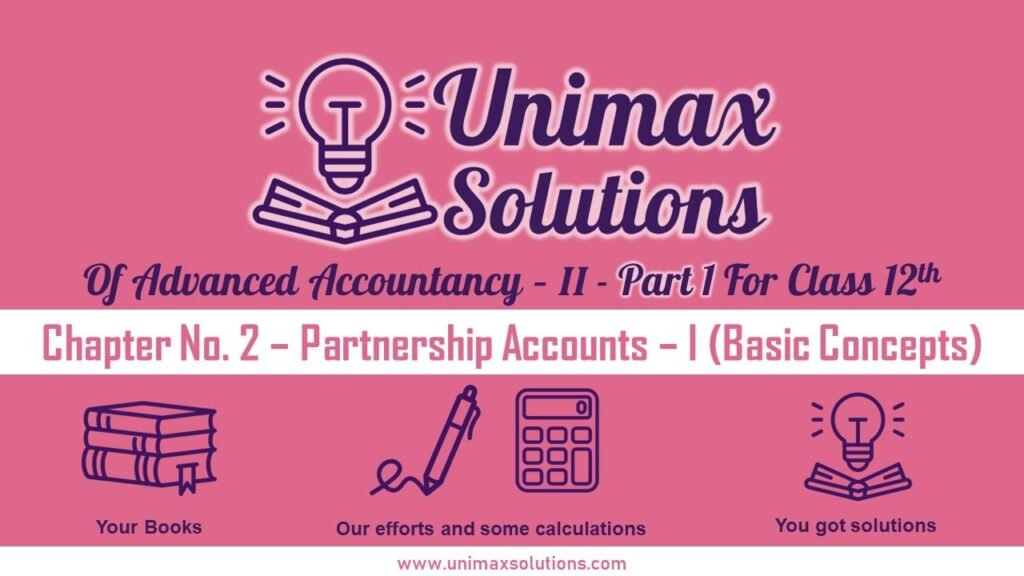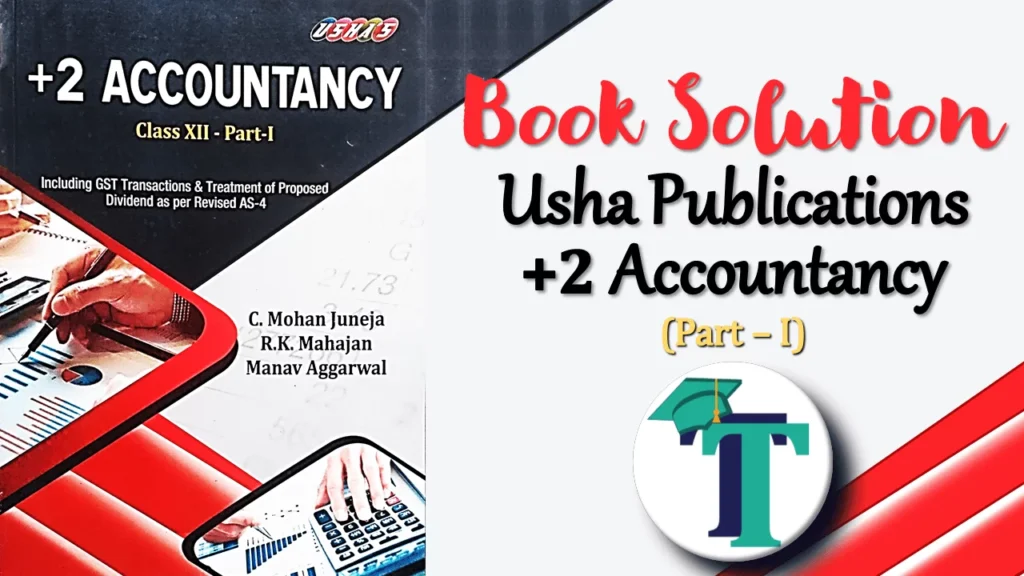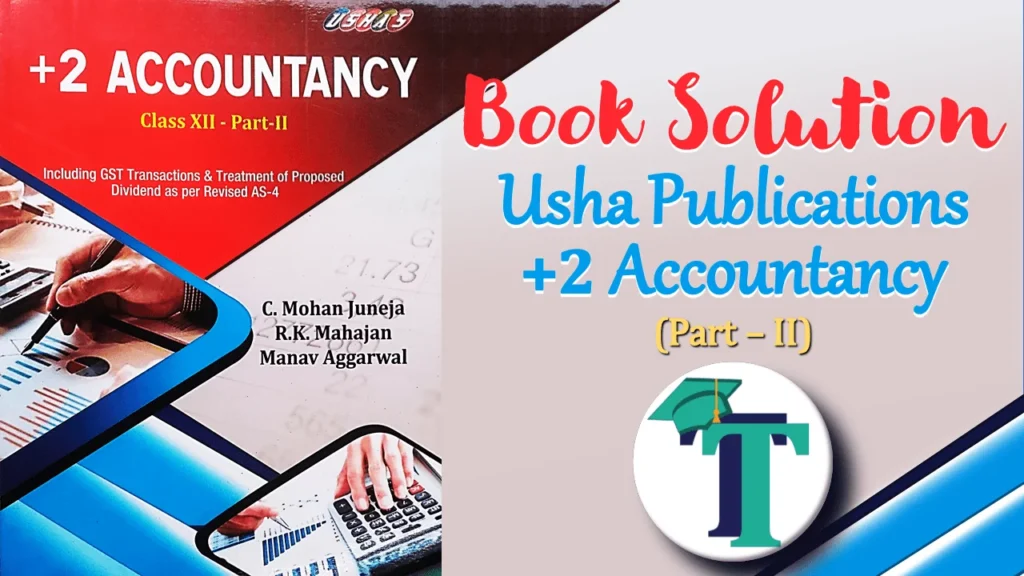
Advertisement
In Chapter No. 2 – Partnership Accounts – I (Basic Concepts) Class 12 unimax, the fundamental concepts and terminology associated with partnerships are introduced to lay the groundwork for partnership accounting. It commences by defining what constitutes a partnership and outlining its distinguishing features compared to other business structures. The chapter covers various aspects including partnership deeds, partnership agreements, and the rights, duties, and responsibilities of partners. Additionally, it provides an overview of different partner types, such as active, sleeping, nominal, and partner by estoppel. Furthermore, the chapter discusses the methods employed for profit distribution among partners, such as fixed ratio, fluctuating ratio, and interest on capital. Practical examples and illustrations are incorporated to facilitate a comprehensive understanding of the foundational concepts.
The solutions to all Questions of Chapter No. 2 – Partnership Accounts – I (Basic Concepts) Class 12 Unimax
Chapter No. 2 – Partnership Accounts – I (Basic Concepts) Class 12 Unimax provides students with a comprehensive understanding of the concepts and principles related to non-profit organizations. This chapter delves into the intricacies of accounting for organizations that operate for the betterment of society rather than for profit. It covers various topics, including the meaning and characteristics of non-profit organizations, their accounting objectives, and the different types of non-profit organizations. Additionally, this chapter explores the accounting treatment of specific items such as receipts, payments, income, and expenditure, along with the preparation of income and expenditure accounts and balance sheets. By studying this chapter, students gain valuable insights into the financial management and accounting practices employed by non-profit organizations. They learn how to accurately record and present financial information, ensuring transparency and accountability in the operations of these organizations. Overall, Chapter 1 of Accounts of Non-Profit Organizations in Class 12 Unimax equips students with the necessary knowledge and skills to comprehend and analyze the financial aspects of non-profit organizations, enabling them to contribute meaningfully to the sector in the future.
The solution to all questions of Chapter No. 2 – Partnership Accounts – I (Basic Concepts) Class 12 Unimax is shown as follows, just click on the image of the question to get the solution.
Question 4 Chapter 2 – Class 12 Part 1 Unimax
Advertisement
Question 9 Chapter 2 – Class 12 Part 1 Unimax
Advertisement
Question 15 Chapter 2 – Class 12 Part 1 Unimax
Advertisement
Check out all books for PSEB
1. Comprehensive Solutions for All Chapters of Advanced Accountancy Part 1 Class 12 by Unimax
UnimaxSolutions.in offers a comprehensive solution for students studying Advanced Accountancy Part 1 in Class 12. With their meticulously curated study material, students can access comprehensive solutions to all the questions included within each chapter. By selecting the chapter name from the study material, students can easily navigate through the topics and find detailed explanations and step-by-step solutions to the problems presented in that section. Whether it’s understanding complex accounting concepts, mastering calculation techniques, or analyzing financial statements, Unimax provides a valuable resource to aid students in their learning journey. With these comprehensive solutions at their disposal, students can enhance their understanding, clarify doubts, and improve their problem-solving skills in Advanced Accountancy, ensuring they are well-prepared for their Class 12 examinations.
- Chapter No. 1 – Accounts of Non-Profit Organisations
- Chapter No. 2 – Partnership Accounts – I (Basic Concepts)
- Chapter No. 3 – Partnership Accounts – II (Goodwill)
- Chapter No. 4 – Partnership Accounts – III (Change in Profit Sharing Ratio among Existing Partners)
- Chapter No. 5 – Partnership Accounts – IV (Admission of A Partner)
- Chapter No. 6 – Partnership Accounts – V (Retirement and Death of A Partner)
- Chapter No. 7 – Partnership Accounts – VI (Dissolution of Partnership Firm)
2. Comprehensive Solutions for All Chapters of Advanced Accountancy Part 2 Class 12 by Unimax
UnimaxSolutions.in presents an exceptional resource for students studying Advanced Accountancy Part 2 in Class 12. With their comprehensive study material, students can conveniently access extensive solutions to all the questions featured within each chapter. By simply selecting the desired chapter from the study material, students can effortlessly navigate through the topics and gain access to detailed explanations and step-by-step solutions to every problem presented in that particular section. Whether it involves understanding intricate accounting principles, honing calculation techniques, or analyzing complex financial statements, Unimax provides a valuable tool to support students in their learning journey. Equipped with these comprehensive solutions, students can enhance their comprehension, resolve any uncertainties, and strengthen their problem-solving abilities in Advanced Accountancy, empowering them to excel in their Class 12 examinations with confidence.
- Chapter No. 1 – Company Accounts (Share Capital)
- Chapter No. 2 – Issue of Debentures
- Chapter No. 3 – Redemption of Debentures
- Chapter No. 4 – Financial Statements of a Company (Balance Sheet Only)
- Chapter No. 5 -Financial Statement Analysis
- Chapter No. 6 – Tools/Methods of Financial Analysis
- Chapter No. 7 – Ratio Analysis
- Chapter No. 8 – Cash Flow Statement
Punjab School Education Board (PSEB) Solutions of Usha Publication.
If you’re a student enrolled in the Punjab School Education Board Class 12, it’s essential to explore a wide range of books to cover the syllabus thoroughly. While the prescribed textbooks are undoubtedly valuable, supplementing your studies with additional resources can enhance your understanding and knowledge. Consider checking out other books that align with the curriculum, offering different perspectives and insights on the subjects you’re studying. These supplementary materials can provide you with alternative explanations, practice questions, and examples that may aid in clarifying complex concepts. Moreover, exploring diverse sources can expose you to a variety of writing styles and viewpoints, fostering a broader understanding of the subjects. So, seize the opportunity to expand your learning by delving into other books that can complement your studies and contribute to your academic growth.
Advertisement


